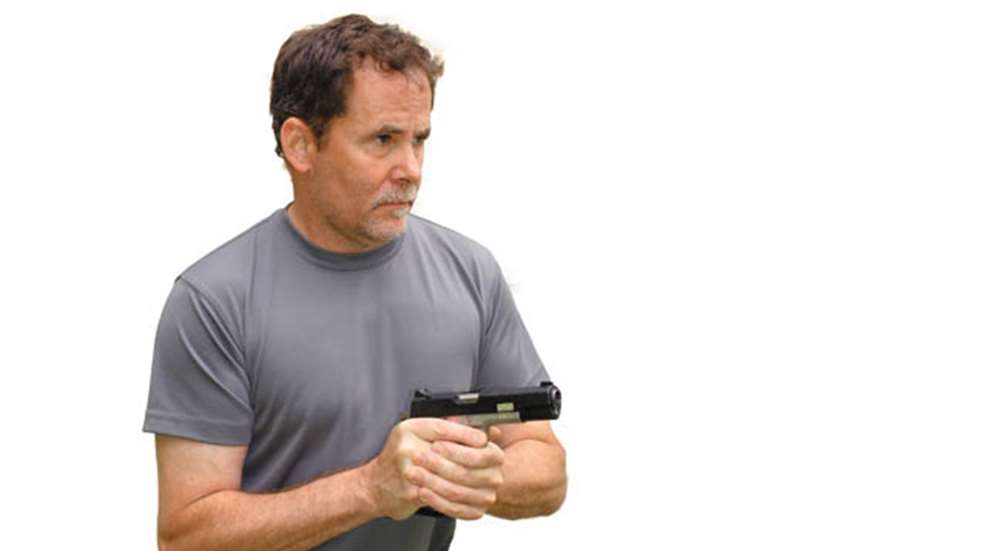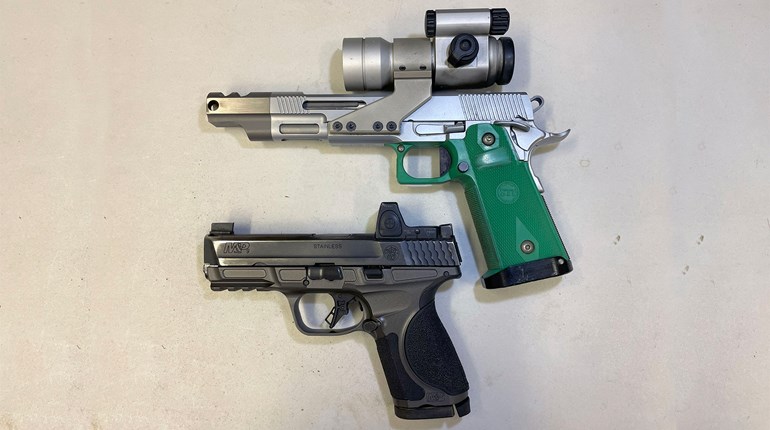
Several manufacturers are now offering handguns with Crimson Trace Lasergrips, and Smith & Wesson's new Bodyguards have integral laser sights. Laser development has far outpaced laser training. Lots of folks have them, but few have been trained how to properly use them. You might think this is over-complicating a simple, instinctive tool, yet that's not the case. You can do some things better with a laser-equipped firearm than you can with one that's not.
One of the simplest laser skills may be the most helpful. We've all heard reference to holding a firearm at high or low ready. Instructors who are savvy enough to include laser training in their course curriculum should also be teaching the laser ready position. Despite being very simple, laser use is something you need to practice until it becomes instinctive. Essentially, laser ready is when your firearm's laser is oriented on the threat, but the firearm is below your line of sight. This lets your peripheral vision work better. The primary difference between laser-ready and a standard-ready position is the ability to instantly direct accurate fire.
You also have a low and high laser-ready. High laser-ready with a handgun would be when the gun is extended toward the target, but your eyes are well above the sights. With a carbine, high laser-ready would be with the rifle shouldered, but with your head erect—in an overwatch capacity. Low laser-ready with the handgun would be with the gun back, close to your body where you first establish a two-hand hold. The rifle would be off and below the shoulder, against the body.
At some point during handgun presentation, you should stop or pass through the low laser-ready position. With a rifle, you will reach high laser-ready just before your eyes find the sights. If it's not a shoot-now situation, laser ready is where you stop to reevaluate the fix you're in. If it is a shoot-now situation, by learning to pass through laser ready you condition yourself to orient the gun at the threat faster. In reality, you may even be able to trigger a shot more quickly. All you need to get a hit is to see that red or green dot on the target.
Anytime you are presenting a firearm to a target or threat, you want to get the gun pointed in that direction as soon as possible. Lasers can help you learn to do that consistently. Also, by working with the laser ready positions, you can learn to keep your weapon oriented at the threat during situation evaluation, while moving or possibly using the other hand to call 911. Include working from the laser-ready positions during dry- and live-fire exercises. There's no point having a tactical tool and not using it to your advantage.






































